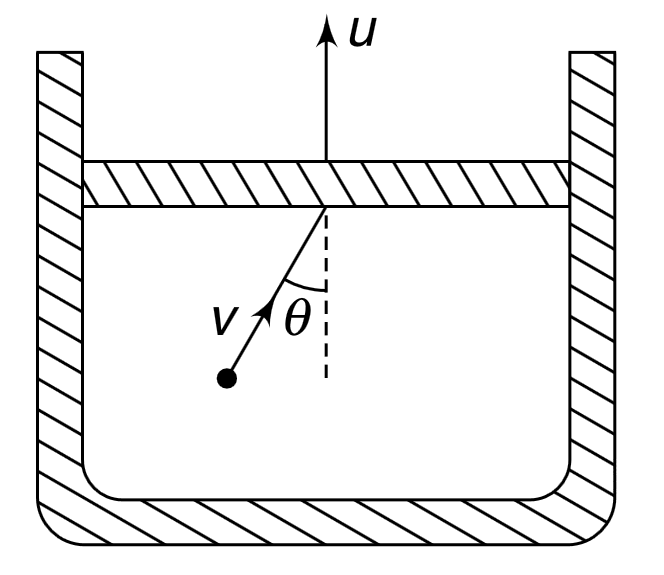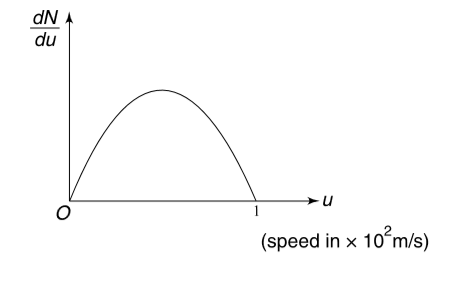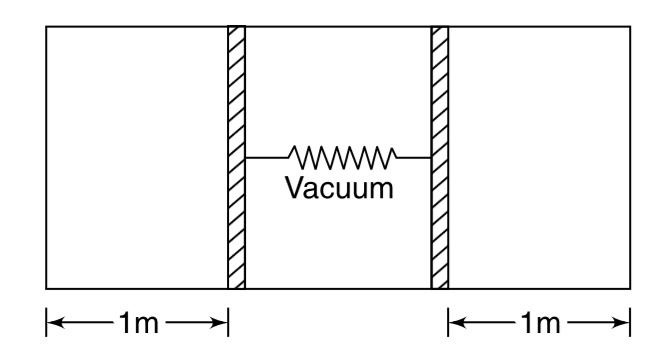Complete Solutions to Level 3 of chapter KINETIC THEORY OF GASES of Class 11 book with complete answers and questions
| Class 11 | PHYSICS |
| Chapter | KINETIC THEORY OF GASES |
| ARIHANT MASTER PROBLEM | Level 3 |
| Number Of Questions | 4 |
| Academic Year | 2023-24 |
An ideal gas is inside a cylinder with a piston that can move freely. The walls of the cylinder and piston are non- conducting. The piston is being moved out of the cyl- inder at a constant speed u.
(a) Consider a gas molecule of mass m moving with speed `v (gt gt u)`. It hits the piston elastically at an angle of incidence q. Calculate the loss in kinetic energy of the molecule.
(b) If the area of piston is A and pressure of the gas is P, calculate the rate of decreases of molecular kinetic energy of the gas sample.
(c) If` u gt gt` molecular velocities, at what rate will the gas lose its molecular kinetic energy

View SolutionThe speed distribution of molecules in a sample of a gas is shown in the figure. The graph between `(dN)/(du)` and u is a parabola and total number of molecules in the sample is `N_(0)`.
(a) Calculate the rms speed of the molecules.
(b) Calculate the total translational kinetic energy of molecules if mass of the sample is 10 g.

View SolutionA cylindrical container is divided into three parts by two tight fitting pistons. The pistons are connected by a spring. The region between the pistons is vacuum and the other two parts have same number of moles of an ideal gas. Initially, both the gas chambers are at temperature `T_(0)` and the spring is compressed by 1 m. Length of both gas chambers is 1 m in this position. Now the temperature of the left and right chambers are raised to `(4T_(0))/(3)` and `(5T_(0))/(3)` respectively. Find the final compression in the spring in equilibrium. Assume that the pistons slide without friction

View SolutionA helium balloon has its rubber envelope of weight `w_("Rubber")` and its is used to lift a weight of `w_("Load")`. The volume of fully inflated balloon is `V_(0)`. The atmospheric temperature is `T_(0)` throughout and the atmospheric pressure is known to change with height y according to equation `P = P_(0) e^( – ky)` where k is a positive constant and `P_(0)` is atmospheric pres- sure at ground level. The balloon is inflated with sufficient amount of helium so that the net upward force on is `F_(0)` at the ground level. Assume that pressure inside the balloon is always equal to the outside atmospheric pressure. Density of air and helium at ground level is `rho_(a)` and `rho_(He)` respectively.
(a) Find the number of moles (n) of the helium in the balloon.
For following two questions assume n to be a known quantity.
(b) Find the height `(y(0))` at which the balloon is fully inflated.
(c) Prove that the balloon will be able to rise to height `y_(0)` if `(nRT_(0)g)/(P_(0))(rho_(a)-rho_(Hg)) gt w_("Rubber"+w_("Load")`
View Solution
Level 3 questions and complete solutions for chapter KINETIC THEORY OF GASES of ARIHANT PHYSICS (HINGLISH) of Class 11